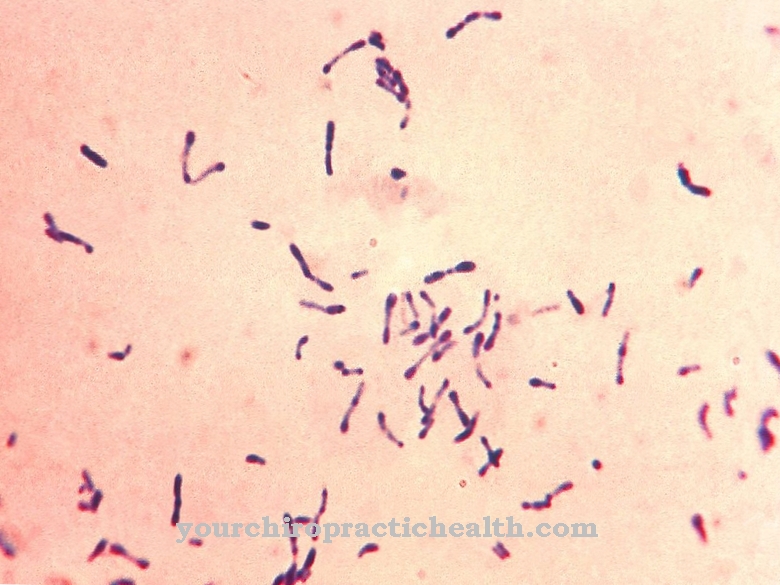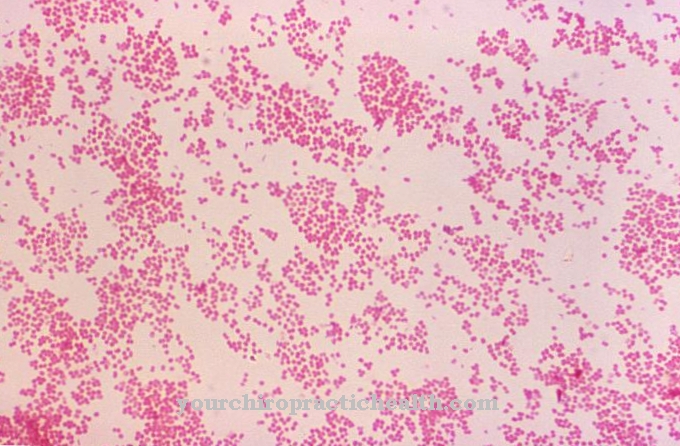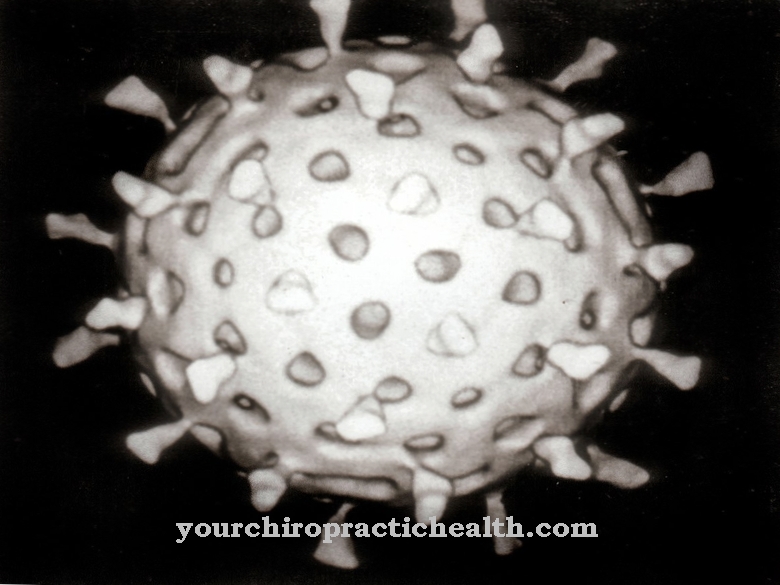At the Onchocerca volvulus it is a roundworm that occurs in the tropics. The harmful parasite can cause river blindness in humans.
What is the Onchocerca volvulus?
The term "Onchocerca" comes from the Greek and means something like "tail" or "hook". The Latin term “volvulus” means “roll” or “turn”. The Onchocerca volvulus belongs to the filariae, which form a superfamily of roundworms (nematodes). It is considered a parasite that affects people and causes diseases.
The history of Onchocerca volvulus can be traced back to 1890. In that year the German helminthologist and zoologist Rudolf Leuckart (1822-1898) received a formation of worms from Ghana in Africa to identify them at his institute in Leipzig. The samples came from the body of two African patients and were tumors the size of pigeon eggs. These tumors contained nematodes, the female specimens of which were twice as long as the males. In addition, a large number of embryos were located near the nodal cavity.
Without making the discovery public, Leuckart sent his own sample and description to the British tropical medicine specialist Patrick Manson (1844-1922), who reported on the nematode at a London congress in 1891. In 1893 there was also a written report in a tropical medicine textbook. Therefore, the years 1891 and 1893 are considered to be the period when Onchocerca volvulus was discovered.
The worm did not get its name until 1910 from Railliet and Henry, who used the Greek-Latin combination of words to describe a "rotating hooked tail".
Occurrence, Distribution & Properties
The Onchocerca volvulus occurs primarily in the tropical regions from West Africa to Angola. The roundworm can also be found in East Africa, Central Africa, South and Central American countries such as Brazil, Ecuador, Colombia, Venezuela, Guatemala and Mexico, as well as in individual regions in Yemen. The parasite prefers to live in moist regions near rivers that flow quickly.
One of the typical features of the Onchocerca volvulus is its narrow thread-like shape. Its diameter is less than a millimeter. While the males are about 23 to 50 centimeters long, the female specimens can reach up to 70 centimeters. The larvae, also known as microfilariae, are between 220 and 280 micrometers in length. In human skin, the nematode is able to survive for 15 to 17 years.
The Onchocerca volvulus is a parasite whose only ultimate host is humans. In the endemic regions affected, almost 100 percent of the population can be infected. The nematode uses the female of the black fly (Simulium damnosum) as an intermediate host. This absorbs the microfilariae during the lancing process. Inside the mosquito, the larvae molt, which then reaches an infectious stage. When biting again, the black fly transmits the Onchocerca volvulus to humans.
Within the organism, the onchocercias migrate through the connective or adipose tissue over a period of two years. In some cases, they also pass through the eyes when they reach the head region.
After about a year, the roundworms form clusters or knots called onchocercomas. In this way they deposit their larvae in the subcutaneous connective tissue or deeper tissue layers. From the female onchocerci, microfilariae are deposited in skin nodules and tissue crevices. From these points they can get to other areas of the skin. In the early stages, the larvae attack the human legs. A few years later, they continue to migrate to the upper parts of the body such as the eyes and head.
Illnesses & ailments
One disease caused by Onchocerca volvulus is onchocerciasis, also known as river blindness. It mainly affects the tropical regions of Africa and South America. It is estimated that around 200 million people worldwide are infected with the roundworm. About 10 percent of all affected people go blind from it.
The term river blindness can be traced back to the fact that in most cases the disease occurs near rivers. The black fly larvae grow there and serve as an intermediate host for Onchocerca volvulus.
Typical symptoms of onchocerciasis include the appearance of painless lumps within the subcutaneous tissue. The microfilariae later cause skin inflammation, which is noticeable as severe itching. In addition, the elastic parts of the connective tissue are destroyed, which in turn leads to the formation of so-called old man's skin or paper skin. It is also possible to develop a leopard skin pattern due to hyperpigmentation.
Subcutaneous onchocercomas are usually found in the iliac crest, sacrum, ribs, shoulders, neck and head. Larger lumps reach a circumference of 10 centimeters and can be seen on the skin.
It takes years for the microfilariae to reach the eye. Then, however, there is a risk of visual impairments and even blindness caused by them. Sclerosing keratitis and clouding of the cornea are considered indications.
Onchocerciasis is usually diagnosed by a doctor through a skin biopsy. During this process, the doctor removes 2 to 3 millimeters of tissue from the skin and does a microscopic examination. If the microfilariae emerge from the skin sample, the finding is positive.
To treat onchocerciasis, the patient is given antiparasitic drugs such as ivermectin, albendazole or diethylcarbamazine. These cause the larvae to decay and release antigens.

























.jpg)


